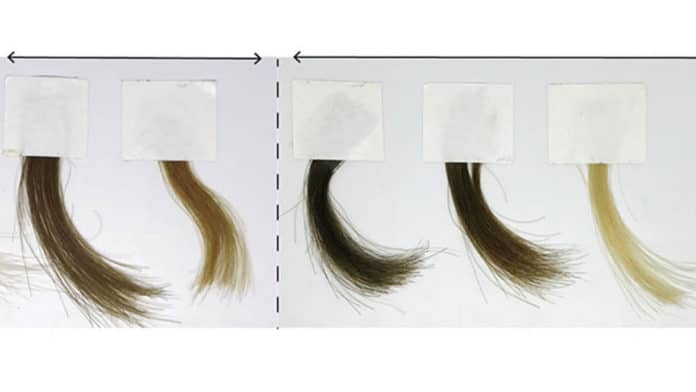Researchers at Northwestern University have developed a new hair dye that uses synthetic melanin to imitate natural human hair pigmentation.
Experimenting with melanin for several years, scientists focused on how to capture its properties that naturally arise in biology. In this study, they used a synthetic process to make a melanin coating on the hair that would mimic the appearance of real, melanized hair in the full array of natural hair colors.
Northwestern’s Nathan Gianneschi, who led the research, said, “Such an approach, if done under mild conditions, could be an alternative to other kinds of hair dyes, avoiding some of the toxicity or allergies associated with those chemicals.”
Most permanent hair dyes use ammonia, hydrogen peroxide, small-molecule dyes, and other ingredients to penetrate the cuticle of the hair and deposit coloring. Along with being damaging to hair, these harsh substances could cause allergic reactions or other health problems in colorists and their clients.
Scientists sought to discover a gentler, safer way to get long-lasting, natural-looking hair color with synthetic melanin.
They tested multiple dyeing conditions for depositing synthetic melanin on hair. The results suggested they could substitute mild heat and a small amount of ammonium hydroxide for the heavy metals and strong oxidants used in prior methods. Scientists found that increasing the concentration of ammonium hydroxide, or red and gold shades by adding a small amount of hydrogen peroxide, and they could produce darker hues.
Overall, the conditions were similar to or milder than those used in commercially available hair dyes. And the natural-looking colors deposited on the hair surface, rather than penetrating the cuticle, which is less likely to cause damage. The colored layer persisted for at least 18 washes.
Journal Reference:
- Mimicking Natural Human Hair Pigmentation with Synthetic Melanin. DOI: 10.1021/acscentsci.0c00068
